After recovering from my week of travel in the San Francisco Bay Area, I took a trip to the Seattle Metropolitan Area again to visit some friends.
While there, I met up with my friends Doug and Dani and went to a sushi restaurant for an omakase experience. There weren’t enough reservation slots available for actual omakase with the chef, so instead, we booked a seat at the regular tables for a chef’s choice four-course sushi meal with 19 pieces of assorted sushi. We also ordered a few appetizers.
Just as a disclaimer, this is my first time using my new camera for close-up macro shots since getting my old camera stolen while in Oakland, California; as a result, some of these photos are a bit blurry while I get accustomed to some of the settings, though I am already progressively getting better.
The first course consisted of albacore tuna from Oregon, shima aji (striped jack) from Japan, kanpachi (amberjack) from Japan, madai (sea bream) from Japan, and kurodai (black snapper) from Greece.
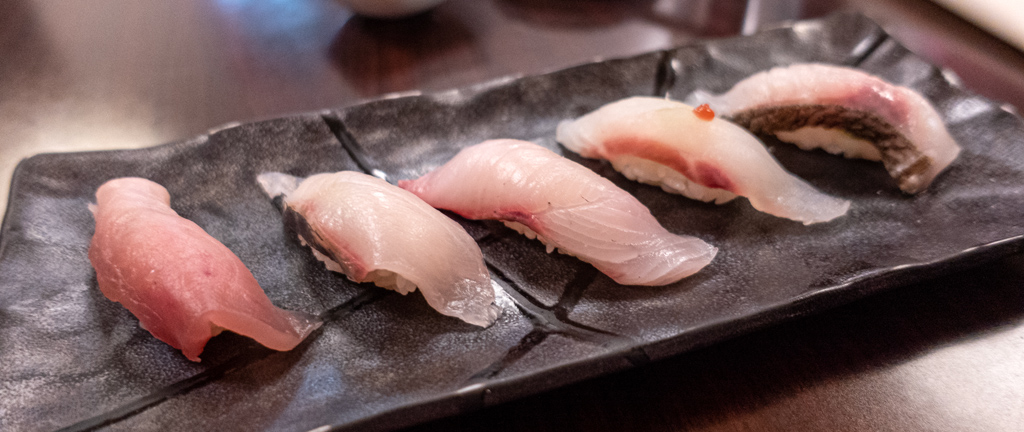
After our first course, two of our appetizers were ready. The first was black cod kasuzuke broiled with Shiro’s original recipe.
The photo makes it look a bit small, especially because I accidentally angled the shot in a way where not much of the fish is in focus, but it was a satisfyingly large filet. It tasted great—it was so tender that just poking at it with chopsticks made it fall apart, and the texture was fantastic.
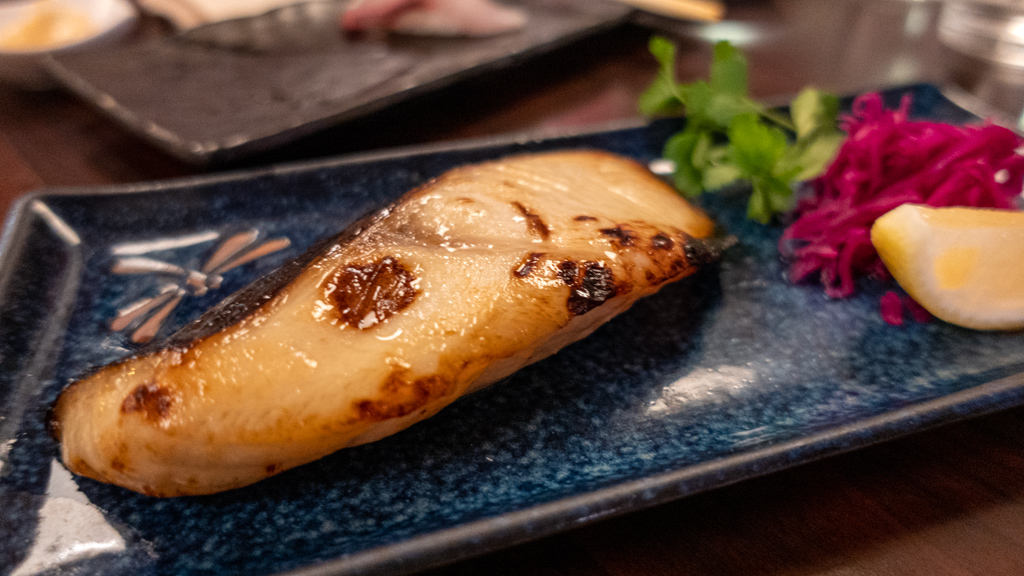
The second appetizer was assorted vegetable tempura. Because it was something that was fried, it felt a little out of place eating it between fish courses due to the oils bringing out more of the “ocean-ey” taste in raw fish. It would have been nice if it came out first or last, but we still had plenty of ginger to cleanse our palates before the next course.
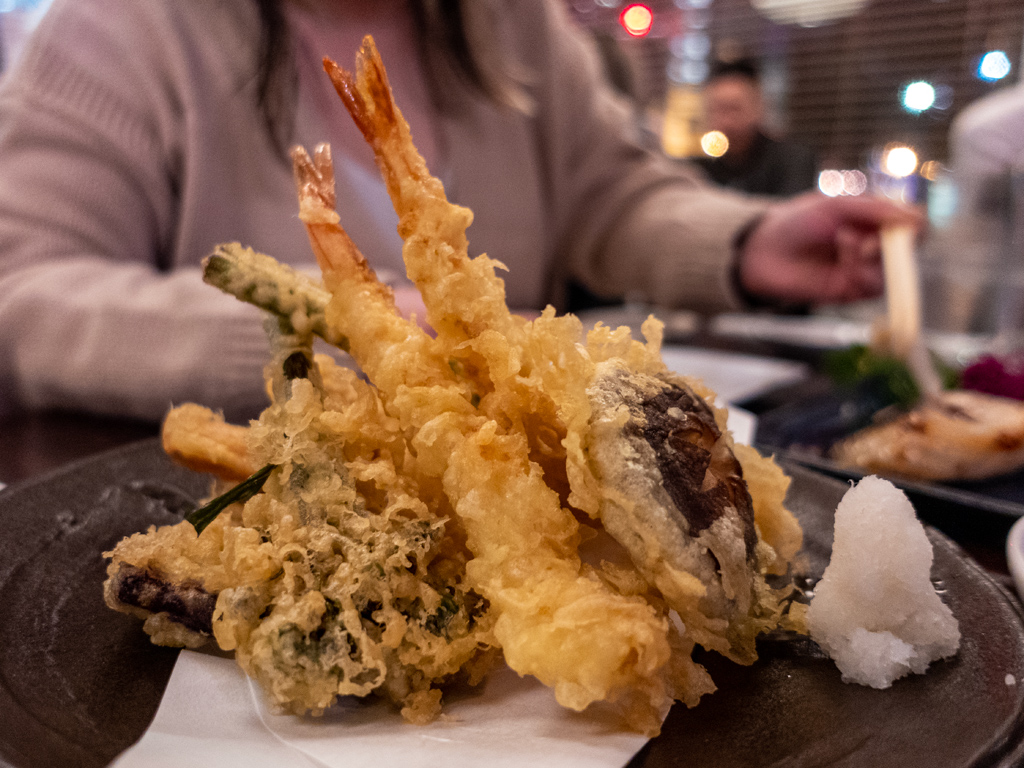
The second course had six pieces: katsuo (bonito) from Japan, botan ebi (sweet shrimp) from Alaska, sawara (king mackerel) from Japan, hotate (scallop) from Japan, Atlantic salmon from Canada, and sockeye salmon from Alaska.
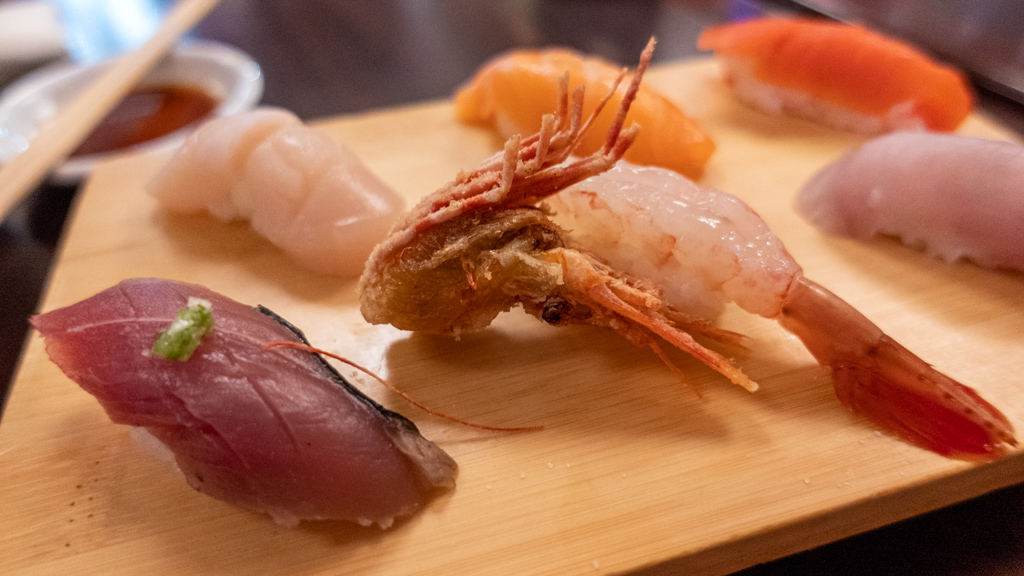
The shrimp nigiri also came with a shrimp head. I wanted to seize the opportunity to get a picture of my head next to the shrimp’s head… though the photo didn’t really turn out as interestingly as I had hoped.
The actual botan ebi was delicious—it was thicker than most other shrimp I’ve tried, the flavor was stronger and richer than usual, and the texture was very satisfying.
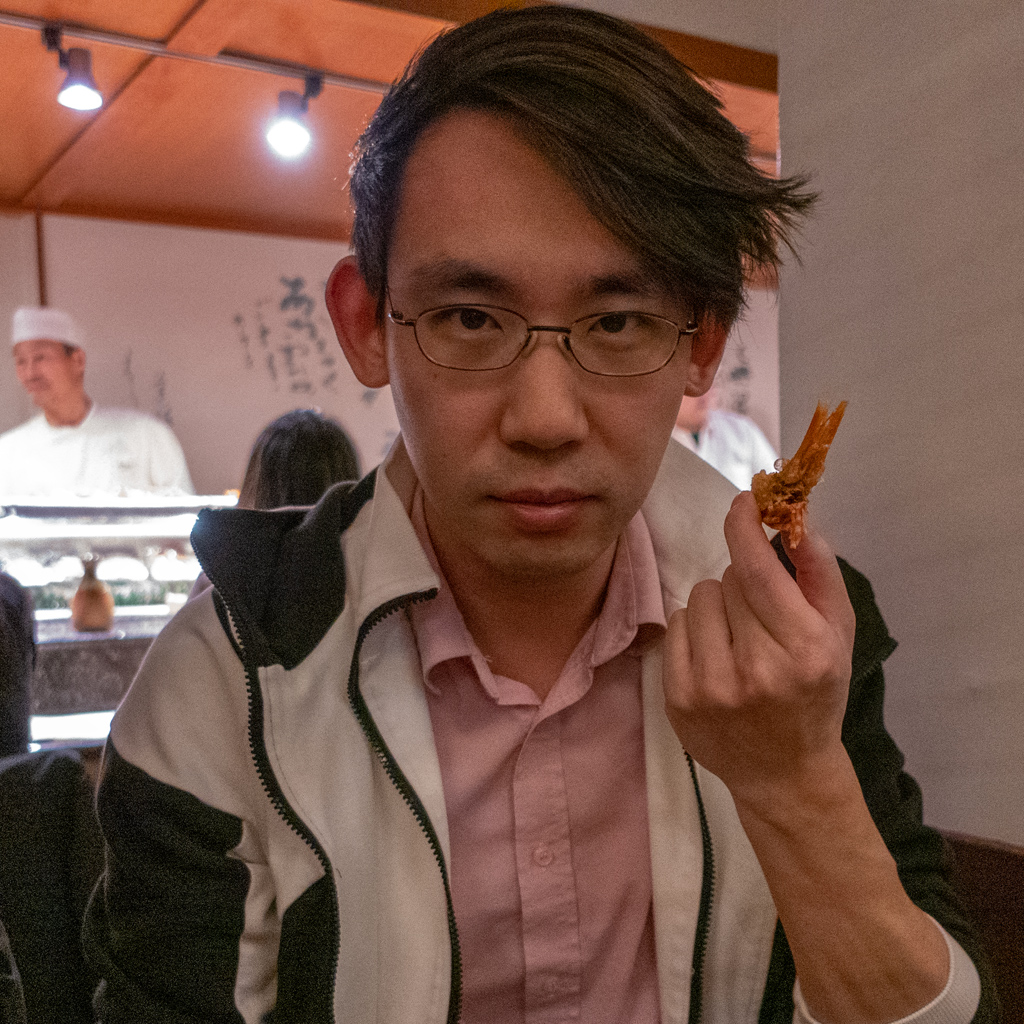
Our third and final appetizer came out—Shiro’s chawanmushi, steamed egg custard with shrimp, chicken, whitefish, shiitake mushroom, and mitsuba leaf topped with Hokkaido sea urchin and salmon roe. It had a lot of flavors going on at once, but most of them were complementary. As you can probably guess, the sea urchin was my favorite part of this dish.
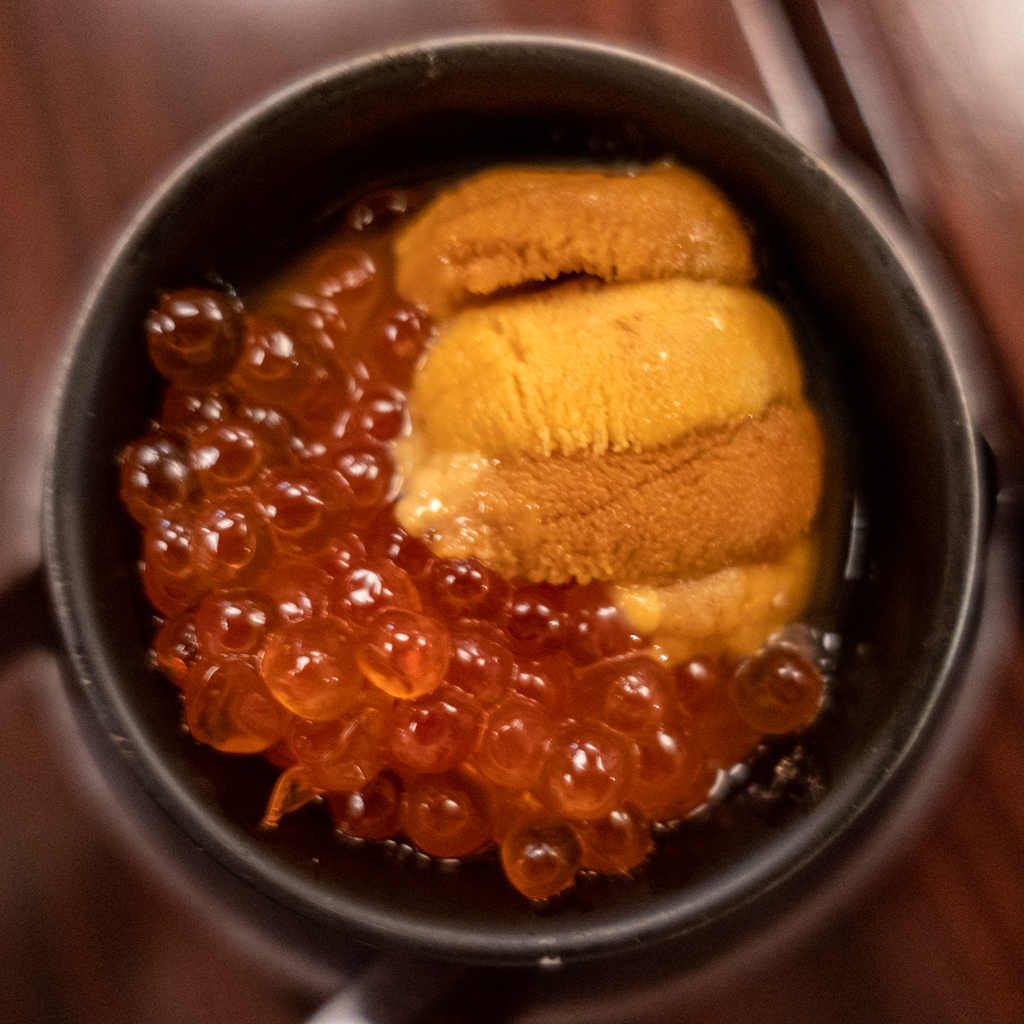
The third course was called “Bluefin Tuna 4 Ways,” and as you’d expect from the title, it was four different variants of bluefin tuna—one akami, one chūtoro, one otoro, and one prepared in a special way with a marinade.
The otoro, or the “wagyu of the sea” as some people call it, was as melt-in-your-mouth as you’d expect from tuna belly. The specially-prepared and marinated tuna was also surprisingly tasty; tuna is generally known for having a fairly basic, simple, and straightforward taste, but the marinade added in a nice bit of supplementary flavor to the fish.
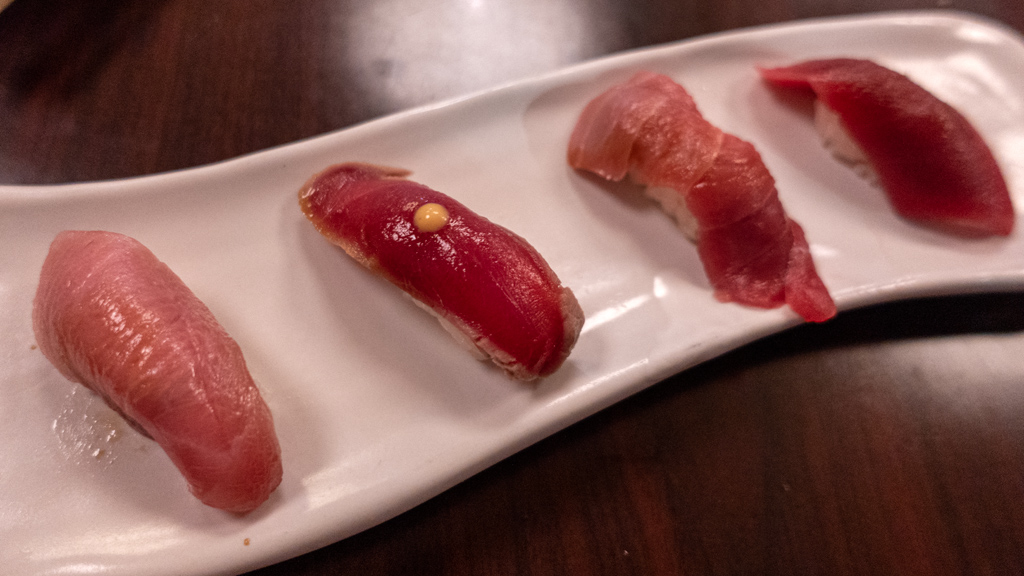
The fourth and final course was negitoro (chopped fatty tuna) from Mexico, uni (sea urchin) from Santa Barbara, unagi (freshwater eel) from Japan, and tamago (egg omelet).
Although sea urchin is one of my favorite types of sushi, my favorite out of this particular lineup was actually the freshwater eel—it was a lot more flavorful and tender than what I usually expect from eel.
The tamago was very disappointing. It wasn’t prepared traditionally; there were no layers of egg, and it resembled a dessert more than it did actual tamago that you’d expect from a sushi restaurant.

After we were done with our appetizers and tasting menu, the waiter brought out a special order menu in case we wanted a second portion of anything, or if we wanted to try anything we didn’t get to taste during the four-course meal. There was one item on that list that I had never had before and that I had also never seen on a menu before, so I figured this would be a great opportunity to try it: ankimo, or monkfish liver.
It tasted very similar to kani miso, often nicknamed “crab brains.” Kani miso is not actually entirely brains—it’s just a mixture of the crab’s organs and other innards. The texture was also very interesting, and difficult to describe—it was both firm and supple at the same time; both powdery and solid at the same time; both dry and pasty at the same time.
Although I probably wouldn’t go out seeking monkfish liver at a restaurant as one of my top dishes, it was actually pretty good. The unfortunate part is that it seemed to be a bit pricey, and apparently it is also only seasonally available during the winter according to the waiter, but if this is included as part of a “pick your own” kind of sushi experience (like revolving sushi or something), I would definitely have it again.
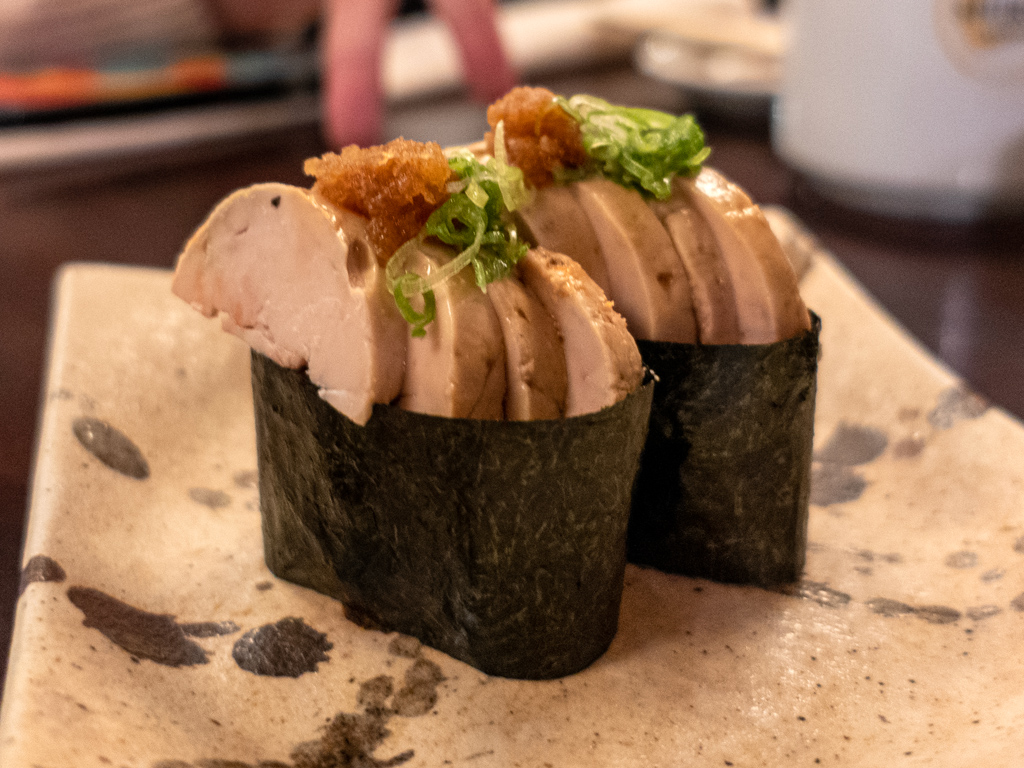
Dani and I wanted to split a Shizuoka matcha ice green tea, but they ran out, so we just drank water. I also wanted to try the mizu shingen mochi—raindrop jelly served with kinako (soybean powder) and brown sugar syrup—but they didn’t have any of that left either, so we passed on dessert.
Here is a breakdown of what we paid:
| Chef’s choice four-course sushi meal ×3 | $ 255.00 |
| Black cod kasuzuke | $ 18.00 |
| Assorted vegetable tempura | $ 16.00 |
| Chawanmushi | $ 20.00 |
| Ankimo ×2 | $ 26.00 |
| Tax (10.25%) | $ 34.34 |
| Gratuity | $ 75.00 |
| Total | $ 444.34 |
Overall, I thought this was a decent restaurant, especially considering that the price per person of US$85.00 is a bit less than what you’d probably expect from a high-end sushi restaurant.
For me personally, I think the chef could have done more with flavor storytelling. I feel like the objective here might have been to give a unique, standalone character or “plot” to each course, so each “category” of sushi was able to have its own plate. This is definitely a valid way to do it, but it was different than what I was expecting going into this—I was hoping for a bit more flavor micro-progressions piece-by-piece, as opposed to going purely off macro-progressions.
With that being said, a side effect of this above point is that, I think this restaurant would be especially good for sushi beginners. None of the nigiri pieces from the four-course meal were particularly adventurous or pungent, and I think one of the only “hit-or-miss,” “love it or hate it” items was the sea urchin. Having each plate broadly categorized by theme is also probably less “chaotic” for someone who just wants to have a good time eating good fish.